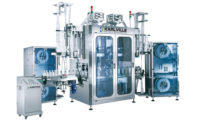Maximizing Truck Show Visits
David Kolman
Along with being able to see and learn about the latest and greatest in equipment, services and technology, truck shows offer the opportunity to meet face-to-face with suppliers and vendors. Furthermore, there are opportunities for networking and education, as well as the chance to see old friends and make new ones.
Planning and preparation are essential to most
effectively use your time at any truck — or industry — trade
show. Here are some tips for making your show visits less exhausting yet
more productive and rewarding:
Prior to a show
• Determine your goals and objectives for attending the
show.
• Go through the show’s list of exhibitors and
activities and plan in advance which you want to see and participate in.
Use flags to mark pages in your show guide and highlight entries for easy
reference.
• Organize your to-do list
into two parts: must see/do and want to see/do, and prioritize each.
• Determine what information you want to get from each
exhibitor you plan to visit. Bring along a written list of questions,
concerns, problems, etc.
• Make appointments with those exhibitors you really
want to meet with.
• Decide on the amount of time you want to spend at the
show, then figure how much time at each booth. Be sure to factor in extra
time for browsing, distractions and waiting around to talk with someone.
• Study the show’s floor plan/map, note where your
targeted booths and activities are located and figure out the most direct
routes to accomplish your plan of attack.
• Use a highlighter to mark your routes, and cross out
the booths you visit to avoid duplication, which wastes time.
• Bring along plenty of business cards.
At the show
• Don’t stop at booths where the product or
service is of no benefit to you, no matter how interesting it may be. This
takes time away from more important booths you could visit or people you
could talk to.
• Take along a notebook and pens or a small tape
recorder to make notes as you go. It is easy to experience information
overload. You might also want to bring along a camera and extra film.
• Collect only information that is of interest to you.
Don’t load up on all the free stuff — you’ll only lug it
around all day and possibly throw most of it away later.
• Request that literature be mailed to you. This will
avoid you having to carry it around with you all day.
• Take a light, comfortable shoulder
“carry-all” for materials you accumulate throughout the day.
Plastic bags can become uncomfortable because they cut into your hands and
may tear open.
• Take a break periodically to refresh. Weather
dependent, you might want to step outside for some fresh air.
• Comfortable walking shoes are a must. Insoles provide
extra comfort.
• Dress in layers as the
temperature in an exhibition area can change from one hall to another.
• Leave the show about an hour or so before the
show’s closing. This will help you avoid long lines for busses and
cabs and the traffic congestion of everyone leaving at once.
After the show
• Summarize your notes each evening.
• Review your show itinerary for the next day. Depending
on what you have or have not accomplished, you may need to revise your
schedule.
• When back in your office, take care of any show
follow-up.
• Share any significant things you learned or discovered
at the show with others in your organization.
I have found the trade shows offer a significant return for a small
investment in time. I have never come away from a show without having
increased my knowledge, made some good contacts or met someone who could
serve as a resource.
David Kolman is a veteran truck communicator, keynote
speaker and long-haul trucker. Commissioned as an Honorary Colonel on the
Kentucky governor’s staff for his work promoting traffic safety, he
actively participates in trade associations and reports news and
information about the trucking industry for broadcasting and print media.
Equipment news roundup
General Motors Fleet
& Commercial Division has a new Web site, whygas.com, that features
information on gas engine advantages, 2007 diesel standards and GM’s
full lineup of medium-duty engines. A savings calculator shows exactly how
much money can be saved with a gas engine, compared to a diesel engine.
(Only GM makes a gas engine available in every medium-duty truck class.)
Roadranger has published
an updated four-disk CD set that packages more than 1,000 product, sales,
service and parts literature documents from Dana and Eaton, providing a
comprehensive Roadranger system and service product library. The CD,
publication number TCMT0100 is $30 and may be ordered by calling
888/386-4636.






